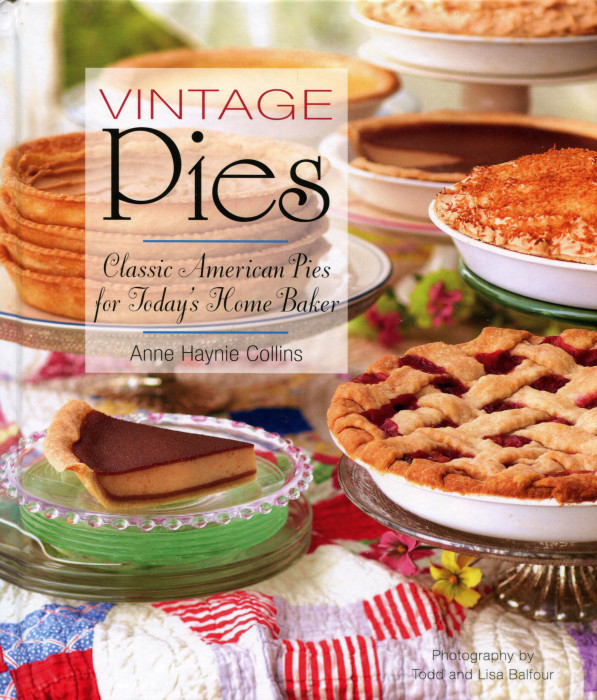Suzi and I are in Maine. Eating pie and hiking to stay calorie-neutral. While we are gone, we are giving you a tour of the best pie cookbooks for your enjoyment. This book is for those who love both history and pie. A pie fanatic, Anne focuses here on those vintage pies that made pie an American staple in the 18th and 19th centuries. Here are the pie ideas that Anne’s grandmother remembers her grandmother made. We get a view here of pie from the mid-1800s and earlier, pie as it was loved and nourished by a country of farmers without electricity.
There are pie styles and types here you may have heard of — like Chess Pie — but there are many examples here of other heritage pies. And they are grouped in chapters that reflect the basic nature of that treat.
It’s clear that mankind has a sweet tooth. There is no intellectual reason for a farm family in Amish territory in the 1800s to have pie. Except, that we all seem to crave and love the sweet side of life. Here we find examples of how to achieve that sweetness with an elegant simplicity.
Chapter by chapter we can explore these pie concepts.
Transparent Pies have their origin in traditional English baked goods. The filling is sugar, eggs and butter — sometimes augmented by flour or with some additions of fruit, spices or little dairy. Still these fillings are very simple, not see through transparent pie, but surely resembling stained glass in their devout color. Examples of transparent pies include Pecan and Vinegar and the classic Chess where a resonant yellow color is the result of adding yellow cornmeal.
Cake Pies are a Pennsylvania Dutch specialty. They are extensions of transparent pies, ones where additions like molasses or sugar introduce a deeper color and denser texture. The contenders here include Shoofly and Amish Vanilla.
Custard Pies have been enjoyed for over 200 years. Their original popularity grew because they use simple ingredients, often leftovers, that every household would have had on hand. You may not have seen these recipes before, like the Union Pie from Pennsylvania with a filling of sugar, milk, eggs, molasses and buttermilk. The Marlborough Pie uses apple custard, something new to most of us. What we would all recognize here is the quintessential Pumpkin Pie.
The chapter on Cream Pies will open your pie eyes. You probably, like me, hear “cream pie” and imagine a rolling white top of whipped cream. Not in the originals, where the “cream” referred to the base like Butterscotch, Chocolate, or Lemon. Then, atop the filling goes meringue, not whipped cream and the pie has another round in the oven. So your Lemon Meringue Pie is actually a cream pie.
Fruit Pies presents an array of the treats we can savor, from spring to fall. Rhubarb, Strawberry Rhubarb, Peach and more all are on the display here. Each recipe comes with a matching photo that does make you want to find that buried can of Crisco and being making crust. What is interesting here about these fruit pies is their stark authenticity.
These are the vintage, heritage versions. If you look up “peach pie” in a contemporary pie book — I’m not naming anyone here — you’ll find ingredients like lemon juice, nutmeg, cinnamon, vanilla, perhaps some jam and more. Not here. For example, the Cherry Pie recipe uses a crust, cherries, some sugar, a little flour and even less butter. That’s it: really cherries and sugar. The result is a pure, intense flavor of cherries and cherries alone.
Vintage Pies is a celebration of a different era, a different cuisine, and ideas that have been pushed aside as turn to the “newer and better,” the more extravagant. A return to the past, if only for a pie or two, is a good idea. Vintage Pies is an excellent guide to the pie past that is part of the complete American culinary heritage.

